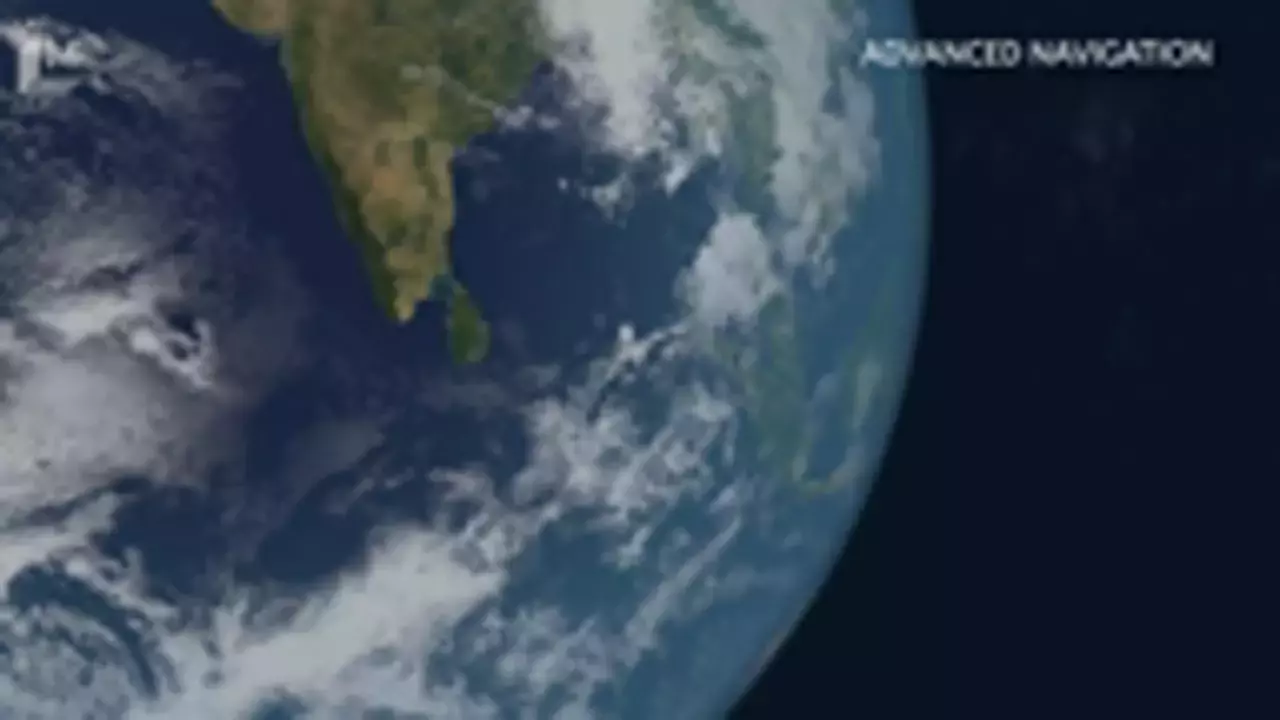Earlier this week, Nationals Park featured something even less likely than a no-hitter or an inside-the-park home run: commercial drones flying outdoors in the nation’s capital.
Federal Aviation Administration regulations prohibit flying uncrewed aircraft within 15 miles of Washington National Airport without specific, detailed authorization beforehand. But the chance to demo drone delivery in the ballpark rented out by industry group AUVSI (Association for Uncrewed Vehicle Systems International) for a two-day policy conference was worth that trouble.
“That required both TSA and DHS approval as well as FAA,” AUVSI CEO Michael Robbins said in an interview. “Just a short time ago, we wouldn’t have been able to pull that off.”
A Wing drone takes off from Nationals Park in Washington (Credit: Rob Pegoraro)
The actual demonstrations that I witnessed weren’t that much to see: A winged drone from Alphabet’s subsidiary Wing took off from a spot on the center-field patio, hovered and lowered a cable so that a worker could attach a pyramid-shaped package, spooled the cable and package back up, ascended to about 120 feet and flew across the outfield, then descended to a spot above the out-of-town scoreboard to lower and release the package before flying back.
I was told the package included baseballs–and since the Nats have struggled with accurately delivering baseballs this season, we shouldn’t discount that drone achievement.
Waiting for Waivers to End
With so many drone-delivery services already operating from companies like Wing and Zipline as well as retail giant Amazon, that business can look like it has a clear regulatory flight path. But the current “Part 107” FAA rules require waivers to fly at night, over humans, and beyond visual line of sight (acronymified as BVLOS, pronounced as “bee-vee-loss”).
A new chapter of regulations, Part 108, will eliminate the need for operators to secure waivers, which Robbins calls a “time-intensive and costly process”; an environmental assessment alone can run $100,000.
“We’re writing the rules that will explain what someone needs to do to safely operate a drone,” said Daniel Edwards, acting assistant secretary for aviation and international affairs at the Department of Transportation, in an address on Wednesday.

(Credit: baranozdemir/Getty Images)
He and other government officials stayed studiously vague at the conference about Part 108’s substance and arrival, which left airspace for other speakers to discuss how important a set of rules would be.
“No more waivers,” Will Wheeler, principal for uncrewed aircraft systems at Southern Company, said a day earlier. That electric utility needed one to conduct BVLOS inspections of power lines and other infrastructure.
Will Dawson, founder of the Agricultural Drone Initiative, said in the same panel that many small-business farmers lacked time to secure waivers to conduct needed drone inspections of their crops: “The bank and the crops are both very impatient.” He further suggested that Part 108 should feature more tolerant rules for flying over private properties.
On Wednesday, AUVSI officials informed attendees that the organization had heard from federal officials that Part 108’s publication was imminent, leading to a round of applause from attendees. “We’re going to see the industry scale in a very significant way,” Robbins predicted in our conversation.
Some Anxieties Lingering in the Air
But any large expansion of flying by drones and other forms of what the industry calls “advanced air mobility”—a separate FAA regulation in the works will cover air taxis that take off and land vertically—may be tricky in the current air-traffic-control system.
Not only does it run on seriously obsolete technology, it’s also short on air traffic controllers in such crowded areas as New York, leading to flight delays and cancellations.
“We can no longer really rely on the heroics of the individuals to prevent the brittleness of the system from reaching a breaking point,” said Shivanjli Sharma, manager of NASA’s Air Traffic Management Exploration Project, in a Wednesday panel.

Get Our Best Stories!
Your Daily Dose of Our Top Tech News

By clicking Sign Me Up, you confirm you are 16+ and agree to our Terms of Use and Privacy Policy.
Thanks for signing up!
Your subscription has been confirmed. Keep an eye on your inbox!
Robbins emphasized that delivery drones flying below 400 feet “are not really using the ATC system at all right now.” He also voiced confidence in the Trump administration’s plan to modernize ATC, backed by $12.5 billion for the FAA in the budget-reconciliation bill.
“As ATC scales and is updated and modernized, it will be able to accommodate additional traffic of all types,” he said.
The discussions at AUVSI’s conference also covered two types of drones that the industry is much less fond of. One is drones flying illegally near airports, which Simone Pérez, assistant administrator of the DOT’s Office of Policy and Strategic Engagement, said results in more than 100 reports a month to the FAA.
Jim Bamberger, division director for multimodal and public area capabilities at the Transportation Security Administration, explained in a presentation how TSA is working to handle rogue drones.

These are your theoretical options for dispatching a rogue drone, and they all have issues. (Credit: Rob Pegoraro)
“We’ve gotta identify if it’s friend or foe; we’d love to be able to identify the operator,” he said. But taking action beyond that will require a literal act of Congress.
Recommended by Our Editors
“We don’t have the authority right now to position law enforcement at an airport and, if we see a drone, mitigate that drone,” he said. “Mitigate” could include such options as jamming the drone’s radio transmissions, staging a remote takeover, or even hitting it with a laser or a projectile (“directed energy” and “kinetic countermeasures” in the milspec-speak of his slide deck).
Multiple speakers mentioned the other sort of undesirable drone: Chinese-made models, which the Trump administration is already considering banning sales of.
Sen. Rick Scott (R-FL), after declaring in a speech Wednesday that he aims “to get government out of our lives,” said the government should ban all Chinese-made drones: “China wants to destroy our way of life.”
Robbins supported the senator, saying “As a nation, we should not be reliant on a foreign adversary for critical technology.”
Leveling Off the Hype
Hype over drones and air taxis can be almost as annoying as AI hype, so it was striking to see how many speakers acknowledge public anxiety (see last winter’s hysteria over drone sightings in New Jersey that turned out to be airplanes) and note the relatively small scope of their ambitions.
Mark Blanks, Wing’s head of global flight operations, nodded to worries about drone crashes by explaining in a talk how its delivery drones’ frames are designed to break if they hit anything. “We do not want nonparticipating individuals or property to be negatively affected by our operations,” he said.
Bobby Fraser, head of regulatory affairs and policy, at United Airlines, played down that airline’s earlier predictions of air-taxi service using Archer Aviation’s electric vertical-takeoff-and-landing (eVTOL) aircraft in New York’s crowded airspace. “I don’t think we’re going to start this with Manhattan to Newark,” he allowed in a panel on Wednesday.
His fellow speaker, Delta Air Lines director of policy Jana Lozano, spent much of her time on that panel talking about how that carrier is employing drones to inspect planes instead of sending people up on ladders: “It’s a safety enhancer.”
An executive at another air-taxi vendor waved off visions of swarms of drones and air taxis. “We are not going to darken the skies,” said David Oord, director or policy, regulatory affairs and standards at Wisk Aero. “We can only build so many aircraft at a time.”


This drone could be the key to learning more about our oceans
About Rob Pegoraro
Contributor









